Get Engaged: Question
Inqury is an active process that addresses meaningful questions.
 Try It!
Try It!
Choose one phrase from the Common Core standards related to questioning.
How do you address this idea when teaching about questioning in inquiry?
Students and teachers ask questions throughout the day both inside and outside school.
- Why is King Lear is being so secretive?
- What's the least common denominator?
- How much is 25% off?
Young people need skills to be able to pose clear, concise questions that address personal interests and meet informational needs. Why did this caterpillar choose this particular tree? However they also need experiences posing deeper questions. What's the relationship between a creature and its environment? An inquiry begins with recognizing the need for information.
Questions may come from watching the world through television shows, online news, or a parent's conversation.
Natural curiosity and observations may stimulate a child's wonder about a topic or issue.
Sometimes students are faced with problems posed by their teachers or real-world dilemmas of everyday life.
This stage can be both exciting and frustrating. Some students are overwhelmed by the prospect of selecting a topic and developing research questions.
Others are excited about the prospect of connecting a general problem to their personal interests and point of view.
Carol Kuhlthau stresses that at the dawn of inquiry thoughts may be vague centering on areas of uncertainty. However once a topic is identified, students feel a sense of optimism.
Let’s explore four elements of the early stages of inquiry beginning with topic selection: topic selection, background information, catalysts of inquiry, and questions.
Topic Selection
It's useful for students to do some brainstorming before they begin an inquiry. Ask students to write about the types of books, websites, and video they like. What activities and hobbies interest them? What are their favorite animals, inventions, people, or careers?
Topic Starters
When given a free inquiry assignment or the chance to select a topic in a general area, it's difficult for some students to know where to begin. A list of option is a useful way to get thoughts flowing.
- 50 Argument Essay Topics. A nice list of questions.
- 100 Research Paper Topics. A list of topics with questions.
- Helping Students Pick a Research Topic. An article with lots of examples.
- Hot Paper Topics. A list of popular topics and issues.
- Hot Topics. A list of topics and website links.
- iDebate. An extension list with background information.
- Middle School Public Debate Topics
- Research Paper Topics. Topics with associated questions.
- Speech and Term Paper Topics. This list of topics lead to quality websites.
 Rather than selecting a topic because they already know about it or have a friend who has chosen the topic, ask students to critically think about their reasoning for topic selection.
Rather than selecting a topic because they already know about it or have a friend who has chosen the topic, ask students to critically think about their reasoning for topic selection.
It's useful to keep an inquiry journal throughout their investigation. This can become a useful tool in process assessment. Ask students to select three possible topics and/or questions to explore. Why did they choose these topics? Why are they personally meaningful?
For a free inquiry, explore Leslie Preddy's Pre-Search Activity 1 (PDF) sheet for ideas and Pre-Search Activity 2 (PDF) sheet for categorizing ideas and thinking about the topic. Ask students to create a graphic organizer of their thoughts about possible topics. Use Leslie Preddy's Pre-Search Activity 3 (PDF) for ideas.
Background Information
Students find it useful to begin an inquiry by searching for background information on possible topics. Reference resources such as encyclopedia and dictionaries are useful for these types of activities.
News Articles
A great way to begin inquiry is by exploring current events websites, newspapers, and other news programming. For a list of online new sources, go to Teacher Tap.
- CBBC Newsround
- Channel One
- CNN Student News
- New York Times Learning Network
- PBS Newshour Recent Programs
- Scholastic News
- Wall Street Journal Classroom Edition
Ask students to read three articles or watch three short programs. Then, write about how one of these articles impacts their life directly or indirectly.
Dictionaries
Students may only have a vague idea of the key words associated with their area of interest. A traditional print dictionary or online dictionary can be useful in exploring the possibilities.
- Dictionary
- Thesaurus
- Lightweight Visual Thesaurus
- Snappy Words
- Thesarus.com
- VIsual Thesarus. Limited search for free
- Visuwords. Great free online graphical dictionary
- Information Exploration
- Wolfram Alpha. A place to explore and calculate.
- Word Dynamo. A place to practice and explore words.
- General
- ITools provides a clean, toolbox of dictionaries and translators.
If your class is studying medieval occupations, a student may be faced with a list containing unfamiliar words such as furrier, minstrel, or scribe. Using both Google and Bing you can define a word by writing define then the word such as define minstrel.
Ask students to define three words related to a topic being considered. How do these words help them better understand their options?
Almanacs
Like dictionaries, almanacs are useful for quick access to information. They are particularly useful for categories of information such as countrystatistics, world flags, natural disasters, or weather information.
Ask students to use the almanac to locate interesting tidbits of information about possible topics. These exploration may stimulate questions that require more in-depth study.
Encyclopedia
Use an encyclopedia for additional background information. Britannica is online. WorldBook is an online subscription. Wikipedia, Information Please, and Ask Reference are collections of resources. Encyclopedia.com searches online encyclopedia. You also have access to World Book Online Encyclopedia through the Public Library.
Encourage students to use these resources to help them identify issues related to their topic or subcategories they may not have considered. Students should write about how this new information impacts their thinking about a topic.
Like any encyclopedia, you’ll find errors in Wikipedia. Use the body of the article for background information. However ask students to explore the external links at the bottom of the page to verify information.
One of the most useful aspects of encyclopedia are the external links or articles that are cited at the end of the entry. It's useful to explore areas of interest through well-known, authoritative websites associated categories of topics. This exploration can often lead to interesting questions for further exploration.
Model the use of reference materials to think about researchable questions. Use Leslie Preddy's (PDF 1) (PDF 2) sheet for ideas.
Pathfinders
Pathfinders are subject guides that include both print materials and online resources related to a particular topic. They help streamline the research process for students by providing quality starting points. An easy way to locate pathfinders is to do a Google Search for a topic and add the term "pathfinder" such as "tornado pathfinder".
- BJ Pinchbeck's Homework Helper. Lists of websites associated with topics.
- EThemes. Search for topics by topic or grade level.
- Homework Center. Lots of topics.
- Internet Public Library. Lists of websites associated with topics.
- Lakewood Middle School Pathfinders
- Pathfinders. This page links to many pathfinders.
A company called Springshare has an online service for making pathfinders. Explore East Baton Rouge Parish Library. You can search for pathfinders people have created at the LibGuides Community page. Do a search for libguides in your interest area. Open Google and enter site:libguides.com cell biology
A daily reflection is a good way for students to think about their process with a research project. Examine Leslie Preddy's Daily Reflection (PDF) sheet, then create your own.
Catalysts for Inquiry
The inquiry process begins with an open mind that observes the world and ponders the possibilities. Young people need a catalyst for inquiry. Rather than being given a problem or choosing a topic from a list, consider an experience that will cause them to wonder about the world or discover a problem that needs to be solved. Although you may guide them in the identification of a problem or development of questions, it's important that they learn how the process of inquiry begins. A variety of media can be used as inquiry starters.
Context and Catalysts
Let's say your students are exploring the life of a person, place or thing within a specific context and also the greater context of a time period or event.
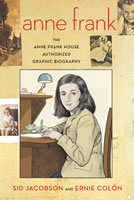 For instance, you might connect Anne Frank to the larger context of World War II You might begin by exploring her life through a graphic novel or video production.
For instance, you might connect Anne Frank to the larger context of World War II You might begin by exploring her life through a graphic novel or video production.
- Anne Frank - YouTube Channel (Use Zamzar to download clips)
- Anne Frank - Official Website
- The Secret Annex - Virtual Exploration
- Anne Frank: The Anne Frank House Authorized Graphic Biography by Sid Jacobson and Ernie Colon
- PBS Masterpiece Theatre
- We Remember Anne Frank (teacher guide)
Once students have a context for their inquiry, they're ready to begin asking questions about the time period. ExploreCommon Questions About the Holocaust.
Use Investigating the Holocaust: A Collaborative Inquiry Project to help students investigate resources and share experiences related to the Holocaust.
This approach can be taken for any time period. Learn about individuals who made a difference for example use The Power of Children from Children's Museum of Indianapolis.
Catalysts Across the Curriculum
Consider the many different media that could be used to stimulate ideas related to a problem or topic. Think about the use of text, photos, maps, infographics, video, interactive websites, and games.
Images as Catalyst. You might use a photo collection to generate ideas. Kitzu is a digital image resources. Select a content area and a topic. Then, download a kit containing images.
Wikimedia Commons is another good starting place for images.
Create a list of web addresses containing images that will stimulation discussion. Locate pairs of graphics that can be used to make comparisons.
 Use historical drawings and painting to stimulate questions about the American Revolution or other time periods.
Use historical drawings and painting to stimulate questions about the American Revolution or other time periods.
- Molly Pitcher: Fact or Fiction?
- Was this a real person or a myth?
- When was the event?
- When were the images made?
- Were all the pictures based on an earlier image?
- Is the illustrator bias in some way?
- Is the image realistic or invented?
- How are these images alike and different?
- Which is most accurate?
- Which is most effective?
- Which would I choose to use?
Visual stories such as Sugaring Time by Kathryn Lasky are also an effective way to jumpstart an inquiry. Consider the Scientists in the Fieldseries.
- What are the most important ideas in the story?
- Could the story be told from a different perspective?
- What other types of visuals could be used?
- How would the story be different in another setting?
- Could you tell the entire story without words? How?
- What questions do you have about the story’s topic?
- What are your questions about the people and place?

Infographic as Catalyst. An infographic is another wonderful way to jumpstart an inquiry. An infographic is a visual representation of information that uses text, images, and graphs to quickly provide an overview of a complex idea. Many blogs highlight new infographics available online.
- Cool InfoGraphics
- Data Visualization
- Flowing Data
- Gapminder
- Good
- Good Transparency
- Hipmunk Flight Search
- Infographics Showcase
- Joe Lertola
- NMap
- USA Today Snapshots
- Visual Economics
- Visualizing.org
- visual.ly
Infographics are particular useful when studying world languages, because online translators can't translate graphics. As such, students must do the translations themselves. When searching for infographics in other languages use the correct term. For instance, in Spanish it's "infografia" such as the vegetacion infografia.
Maps as Catalyst. Showing students the Charles Dickens Google Map may make students wonder about literary topography of other authors.
Audio as Catalyst. Use podcasts, music or other type of audio to generate questions. For instance the Science NetLinks podcast page contains dozens of high-quality articles to jumpstart student questions.
Interactives and Games as Catalyst. Use online interactives to stimulate thinking about a content area. Playing the EcoDefenders game could stimulate ideas for an inquiry.
Artifact as Catalyst. An inquiry could begin with an artifact such as a favorite toy or museum item.
Arts
- News: ArtsJournal
- Google Art Project. Select a world of art in this cool, online database.
- Shmoop Music. Learn about the "big picture" regarding a topic related to music.
- Infographics: 10 Most Expensive Works of Art, Hybrid Dance, Rise and Fall of LilJon, Theatre Infographic, Broadway Facts, Importance of Being Earnst, Theatre Diagram, Firework Theatre, History Pop/Rock Music, Crayola Colors, Cubist/Abstract Art, Tattoo
- Applied Areas: The Arts. This page has links to some of the best quality content for teens.
English (Literature, Reading, and Language Arts)
- News: Arts & Letters Daily
- Shmoop Lit, Shmoop Poetry, Schmoop Shakespeare, Shmoop Mythology, Shmoop Bestsellers. Provide students with the "big picture" regarding the work.
- Infographics (English): What Does Meaningful Mean?, Analysis of On the Road, Is Print Dead?, Rise of e-books,E-books vs Real Books, Books to Read, Avenger's Family Tree, Most Expensive Books, Top SciFi and Fantasy Books
- Maps: A Literary Map of Manhattan
- Teaching with Infographics: English
- English Resources. This page has links to some of the best quality content for teens.
Math
- News: Science Daily: Math/Computers
- Shmoop Pre-Algebra,
- Infographics: Speed Demon, Fish Stocking, Cruise Ship Infographic, Fourth of July by the Numbers, How to Beat Super Mario, Soccer's Slim Salaries, Talking Turkey, How Much Our Pets Cost in a Lifetime
- Data Visualized: Teaching with Infographics
- Data: Gapminder
- Maps: Worldmapper
- Interactives: Geometry 3D Shapes, Metric Conversions,
- Math Resources. This page has links to some of the best quality content for teens.
Science, Technology, and Health
- News: Science Daily, Scientific American, Nature
- Smoop Biology,
- Photos: Burgers 'n Fries,
- Infographics (Health/PE): Russian Football Team, Boxing, Chess, No Funds Left: The Rising Cost of Being an NFL Fan, Powerboats, Race in Sports, Santana's Change Up, The Tiger Woods Economy, Tour de France,New York Yankees, Soccer's Slim Salaries, The Tongue, Let's Move, The Rise of Biking and Walking, Biking in Minneapolis, Clif Bar Challenge, Paraolympics, Diseasome, Olympic Drug Testing Program, Sports Doping, Who's Not Washing Their Hands? Commuting and Obesity, Driving is Why You're Fat, Sports and Rec Injury, Take Care Of Your Teeth, The Health of Teeth, Road Traffic Accidents, Dead Man Walking,
- Infographics (Science): Big Brother: Satellites Orbiting Earth, Clearing the Air, Deep Water Horizon, Hungary's Toxic Sludge Spill, Earthquakes, Greening Walmart: Is the Giant's Footprint Shrinking?, Water Footprint,Poopnomics: The Economy of Human Waste, Beetle, Seven Summits Infographics, Where Is the Oil?Where is the Silver? Who Owns the World's Gold?, The Digital Dump, Throw Away Culture, Hidden Toxic Waste, Colorado River is Drying Up, The Tongue, Space Exploration, Where will the next volcano erupt? Water, Water Economics, World's Water Content, How Clean Is Your Tap Water? Hidden Toxic Waste, Bee Dance, Beaufort Comic, A Disaster for FEMA, How Dangerous Is Your House?
- Infographics (Technology): Home Improvements for Geek, Get a Grip, Social Web Involvement, How the Digital Revolution Changed Our World, Conversations in Social Media, Darwinian Evolution Photoshop, Small Businesses, History of Computing, History of Audio, QR Codes, Evolution of Programming Languages, If Social Media were Superheroes, BIt-by-Bit
- Teaching with Infographics: Science and Health
- Interactives: Dynamic Earth, Rock Cycle
- Maps: Cancer Mortality Maps, CDC Flu Map, Environmental Disasters, Tracking the Oil Spill, Water Maps
- PE/Health Resources. This page has links to some of the best quality content for teens.
- Science Resources. This page has links to some of the best quality content for teens.
- Technology Resources. This page has links to some of the best quality content for teens.
- Patents: Google Patents
Social Studies (Economics, Geography, History, and Social Studies)
- News: Newspapers Links. Ask students to select and investigate an article from a newspaper located in a particular state or country. How does it reflect the place where it was written?
- Shmoop US History, Smoop Civics, Smoop Economics
- Maps: HowBigReally, Worldmapper, Gapminder and DebateGraph
- Virtual Trips: 360 Cities and GigPan
- Infographics: ECORNomics, Travel and Tourism, The Lottery Economy, An Old City, Immigrant Labor, Illegal Immigrants, How Our Laws Are Made, Where Americans Are Moving, Visualizing Human Migration, America's Poor, On the Rise: Poverty in America, The State of the United States, What Americans Love and Hate About the U.S.A, Where We Volunteer, Volunteer Portrait, Volunteers, California Vs the World, Average Age of Congressman, The True Size of Africa, Napoleon
- The Price of Freedom. Americans at War (interactive timeline). Use a timeline to learn about American wars.
- Social Action: Battlefront, Thomas
- iCivics (games). Students play games to learn about local and federal government.
- Teaching with Infographics: Social Studies
- Interactives: Library of Congress Activities, United States History Map,
- Social Studies Resources. This page has links to some of the best quality content for teens.
World Languages
- Infographics: Language and Your Brain, Most Widely Spoken Languages, Language Families, World Language Families, Most Difficult Languages. Look for infographics in your language areas. Examples: Cradle of Dance
- World Languages Resources. This page has links to some of the best quality content for teens.
Involve students in a brainstorming activity. Ask them to write words that relate to their topic. Use Leslie Preddy's Pre-Search 1: Brainstorming (PDF) worksheet for ideas.
Go to Wonderopolis for some interesting questions to jumpstart wondering and quick classroom inquiries. You can explore hundreds of interesting questions and answers.
Use subject specific resources. For instance, the EnviroTacklebox stimulates student interest in science topics.
Questions
Questioning is at the core of information inquiry and drives the teaching and learning process. In an era of "one answer" standardized tests, this idea of opening a student's mind to questioning and exploring many answers is essential.
According to Danny Callison (1997, 30), "the ability to question is the ability to see beyond the facts and opinions placed before you. The ability to see that most answers are only partial solutions and there are many more questions to explore, is a sign of a life-long learner."
After completing a worksheet calculating simple interest rates, we want students to wonder about interest rates. Why would someone pay hundreds of dollars each month on credit card interest? What could I buy with the interest I'd save by paying with cash? These are the questions make learning meaningful to young people.
Practice simple interest including price of item, interest rate, and length. Pick your own item. What questions do I have about the problem?
Deep Questions
Ask yourself, "how do I encourage students to ask deep questions rather than surface level questions?"
Essential questions probe life's deep issues. To set the context for inquiry, consider posing essential questions to jump start individual questions.
In the lesson It's Debatable, eighth graders are learning to articulate connections between historical and current issues. The essential questions include: Is history relevant to modern issues? Do issues have clear wrongs and rights? Students would then develop their own questions focusing on a particular topic such as child labor.
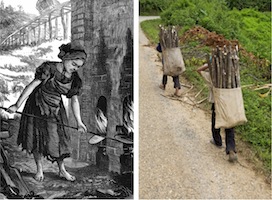
Explore resources related to questioning in inquiry:
- Asking Research Questions. This lesson exploring the creation of quality research questions through research on a discovery or invention.
- Essential Questions. This article defines essential questions and provides examples.
- Essential Questions. This article provides many good examples.
Types of Questions
Some questions help students define the purpose of an inquiry.
- Description Questions. What is it? What are it's elements? What does it sound, smell, taste, feel, or look like? What's an example?
- Comparison Questions. How is it like and different from something else?
- Problem Questions. What's the problem and how can it be solved?
- Process Questions. How, why, and when did it or does it happen?
- Value Questions. Why is it important? Why should people care or know about it?
Use the questions above to help form deep questions on a topic such as ancient civilizations.
- When and where did the civilization exist?
- What were their customs, government organization, and religious practices?
- What were their important achievements?
- What problems did the civilization face? Why? How were they solved?
- What caused the end of their civilization?
- How is this civilization like and unlike another?
- Why is it important to know about this civilization?
Explore two pages from Graphic Inquiry by Annette Lamb and Daniel Callison (2012). It provides example questions based on Jamie McKenzie's Types of Questions using the topic of ATV use on public lands.
Some types of questioning have been developed for particular areas of study such as reading.
Jim Burke identified three types of questions:
Factual Questions. Answers to these questions can be verified with information found on particular page. These questions answer who, what, when, where, and how questions. They take readers "into the text".
Inductive Questions. Answers to these questions are found in the text based on details and examples. They answer why, how, and so what questions. They take the reader through the text requiring them to evaluate and interpret evidence.
Analytical Questions. Answers to these questions connect information in the text to information found through analyzing other works. These queries answer questions ask for comparisons. They take the reader "beyond the text" allowing students to analyze relationships between the text and other resources.
He suggests students practice by creating questions and answers in all three categories using a single text. For instance, students might read a short story or online science article.
A similar approach is taken by Taffy Raphael in Question-Answer Relationships (QARs). According to Raphael, when students understanding how to craft their own questions, they do better asking and answering questions.
Right There (Answer in the text). These are questions that ask who, what, when, where, names, dates, and lists directly from the text or from life. Example: Where does the creature live? Where do you live?
Think & Search (Put it together). These are questions that require thinkers to connect ideas that might be found in more than one place in the text. Example: Compare two perspectives in the reading. Give three reasons why found in the reading.
Author & You (Answer NOT in the reading). These questions ask thinkers to connect the reading with other information. What is the author's perspective? Do you agree or disagree? Why? Give examples.
On My Own Relationships (Beyond the reading). These questions ask thinkers to connect the topic with their personal interests and perspectives. Would you be worried if you lived in an earthquake zone? Why or why not? Why do you think it's important to meet people from other culture? Why or why not?
Students can learn to create these types of questions for book explorations.
Scaffolding for Questions
Some students need more scaffolding for questions than others. Provide question starters to jumpstart thinking.
Low to High Level Questions. The following question starters help students move from low level to high level questions.
- Identify the...
- Describe how...
- The main idea is...
- Explain the...
- List the facts and opinions...
- Relate .... to ....
- Describe the significance of ...
- Predict what would happen if...
- Compare/Contrast... with ...
- Describe the relationship between... and ....
- What are the causes and effects of...
- What would happen if ... (connected, interacted, combined, spoke to)...
- What are the possible solutions for...
- Develop a plan for..
- Develop a new point of view for...
- Describe how ... influences ...
- Create alternatives to ...
- Design the most important elements .... why...
- Design the best best alternative... why...
- Judge the impact of...
- Defend your opinions...
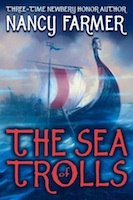 Categories of Questions. It's sometimes difficult to create high-quality questions. It may be useful to identify a focal point or category of questions such as historical documents. Students might read Lewis and Clark by Nick Bertozzi while analyzing the actual diary.
Categories of Questions. It's sometimes difficult to create high-quality questions. It may be useful to identify a focal point or category of questions such as historical documents. Students might read Lewis and Clark by Nick Bertozzi while analyzing the actual diary.
Let’s say your class is reading the book The Sea of Trolls. In addition to questions related directly to the book’s storyline, encourage students to explore Norse Mythology and Viking history. While some students might have questions about the ships, others may wish to explore weapons. The language may be of interest to others. These questions may lead to a wide variety of answers, projects, and performances.
Think about questions in each of the following areas (Shell Education & Greathouse):
- Document-based. Questions that require students to analyze information from a source document to draw a conclusion or form an opinion.
- Facts. Questions based on who, what, when, why, and how
- Conditions. Questions asking the student to compare, contrast, and find similarities and differences
- Opinions. Questions that ask the author's intent and require the use of inference skills
- Outcomes. Questions that ask readers to draw upon their own experiences or prior knowledge, which means that students much understand cause and effect, consequences, and implications
- Sequence. Questions based on order: what happened first, last, and in-between
- Summarizing. Questions that require the students to restate, paraphrase, choose main ideas, conclude, and select a title
- Vocabulary. Questions based on word meaning, synonyms and antonyms, proper nouns, words in context, technical words, geographical words, and unusual adjectives
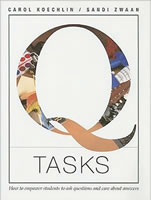 In Q Tasks Carol Koechlin and Sandi Zwaan provide questions to get students and teachers thinking about their questions and information to deepen the investigation. Read the book's Introduction (PDF).
In Q Tasks Carol Koechlin and Sandi Zwaan provide questions to get students and teachers thinking about their questions and information to deepen the investigation. Read the book's Introduction (PDF).
- What's happening? What's not happening? What might happen next?
- What are your questions?
- What other questions might be useful?
- What does this visual or video say? What's the story?
- How will the information provided be useful in addressing my question?
- What are possible problems or questions?
- What's the key question? What's the central problem we're trying to solve?
- How much? How long? How many? How heavy? How deep? How far? How fast?
- What are the elements, features, or variables?
- What are the criteria and constraints?
- How would you explain this problem or question to a friend?
- What would this look like from another perspective?
- What are the causes and effects?
- What are the consequences of?
- What if ..?
- What does this imply about…?
- What evidence supports this argument?
- What do you mean by…?
- What do you see?
- What objects go together? Why?
- Which objects should be separated? Why?
- What would you name this group? How would you describe it?
- In what other ways could these objects be grouped?
Planning for Questioning
When planning for questioning, design activities that nurture high-quality questions.
Topics to Questions. Help students transition from identification of a topic to developing questions. Use Leslie Preddy's Questioning (PDF 1) (PDF 2) (PDF 3) worksheet for ideas.
Stress Burning Questions. Discuss the idea of a "burning question". Use Leslie Preddy's Burning Questions (PDF) (PDF 2) (PDF 3) (PDF 4) (PDF 5) for ideas. Leslie Preddy's middle school students completed an inquiry on Native American Tribes. Explore their questions (PDF).
Model Questions. Work through the development of questions as a class. Model questions through the creation of questions in small groups or as a class. Combine reading materials with visuals, maps, and other catalysts. For instance, while reading a Single Shard, encourage students to learn about the history of Korea.
Evaluate Questions. Show examples of deep questions and discuss why some questions are more useful than others in addressing serious topics. Talk about the difference between surface level and deep questions What is colony collapse disorder? Why are bees important and what would happen if they disappeared? Use the white board or bulletin board to display and categorize questions.

Formulating Research Questions. Use the following questions and sheet to help form research questions:
- What is the question I’m trying to answer, the problem I’d liked to solve, or the key issue I need to resolve?
- What topics do I need to explore? What questions do I have about these topics?
- What information will I need to address this problem, task, issue, or question?
Explore Leslie Preddy's Research Question Help (PDF) sheet for ideas.
Use graphic organizes such as I-Search Chart (worksheet) and Inquiry Charts (I-Charts) to guide inquiry.
Use ThinkTank from 4Teachers to brainstorm ideas for inquiry. It is a great online planning tool that guides students through developing topics and subtopics.
Facilitate Inquiry
As students explore topics and develop questions, ask them to begin formulating a plan for their inquiry. Provide students with questions to guide this planning.
Use guiding questions to facilitate the exploration stage:
- What do I already know about my topic?
- What do I want to know about my topic?
- Write a list of questions you will be exploring during your inquiry.
- Put a checkmark next to questions that can be answered with facts you can find in books or websites.
- Put an "X" next to questions that require a personal decision or may have many possible answers.
- While thinking about your questions, make a list of words you will use to search for information. Think about words that are more broad, more narrow, and related to your topic.
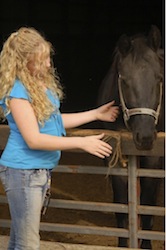 Model the process of narrowing a topic. As a class, narrow a topic.
Model the process of narrowing a topic. As a class, narrow a topic.
One approach is to focus on narrow questions related to a larger study. If we’re studying anatomy, I might ask questions about the anatomy of a horse. If we’re studying history, I might explore the role of horses in that time period. These activities allow students to explore a topic of interest while connecting it to class content. They also require high level thinking when students compare the bones of a horse with the bones in a human. Or, they think about the role horses played in transportation, war, or farming.
Ask students to share the problems that occur with a topic that is too broad. Provide an example and ask students to narrow the topic. For instance, start with the topic of American Civil War. Could you focus on one place, one person, one battle, the causes, the consequences, individual stories, or some other aspect? Talk about combining ideas such as comparing two battles or comparing someone from the north and south.
Use the Five Steps to Better Research tutorial on a white board to provide a nice overview of selecting and narrowing a topic.
Use Keywords: Learning to Focus Internet Research (lesson plan) to help students focus on key words.
Ask students to answer the following questions in their journal:
- What is your general topic?
- What are narrower terms?
- What are broader terms?
- What are related terms?
- What do you want to find out?
Use Leslie Preddy's Narrowing the Topic (PDF) sheet for ideas.
As students leave the questioning stage, they can begin preparing for the exploration phase of inquiry. Use Leslie Preddy's Exploration (PDF 1) (PDF 2) sheet for ideas.
In Info Tasks for Successful Learning, Koechlin and Zwann (2001) suggest evaluating the quality of student research questions by asking:
Focus - Does your question help to focus your research?
Interest - Are you excited about your question?
Knowledge - Will your question help you learn?
Processing - Will your question help you understand your topic better?
Although it would be wonderful for every inquiry to be based on personal interests, it’s not always possible. While the curriculum is fixed, there are always real-world connections. Inquiries provide students with the chance to explore these authentic questions.
The key is helping students develop questions to connect their life and interests with the subject area content.
Learn More
Standards
As you develop assignments related to inquiry, consider the information standards that can be addressed.
(Common Core Standards for Literacy Across the Curriculum Grades 6-8)
Conduct short research projects to answer a question (including a self-generated question), drawing on several sources and generating additional related, focused questions that allow for multiple avenues of exploration.
(Standards for the 21st Century Learner)
Use prior and background knowledge as context for new learning.
Develop and refine a range of questions to frame the search for new understanding.
Display initiative and engagement by posing questions and investigating the answers beyond the collection of superficial facts.
Demonstrate adaptability by changing the inquiry focus, questions, resources, or strategies when necessary to achieve success.
Read widely and fluently to make connections with self, the world, and previous reading.
Demonstrate motivation by seeking information to answer personal questions and interests, trying a variety of formats and genres, and displaying a willingness to go beyond academic requirements.
(National Educational Technology Standards for Students)
Plan strategies to guide inquiry
Plan and manage activities to develop a solution or complete a project.
Apply existing knowledge to generate new ideas, products, or processes.
Identify and define authentic problems and significant questions for investigation.
Websites to Explore
Explore the following online resources to learn more about questioning.
- Brainstorming (teacher strategies)
- Brainstorming Research Questions (lesson)
- Critical Mind is a Questioning Mind (article)
- Developing Different Types of Questions (lesson)
- Discovering and Choosing a Topic (student strategies)
- Encountering the Task. Baltimore Public Schools.
- Mark It Up! Questioning and Making Connections. This lesson contains strategies for encouraging discussions. It includes examples for The Giver by Lois Lowry and Harrison Bergeron by Kurt Vonnegut.
- Research Helper: Questions (student strategies)
- Questioning with Jamie McKenzie (articles)
- Questioning Toolkit (strategies)
References
Kuhlthau, Carol (2004). Seeking Meaning: A Process Approach to Library and Information Services. 2nd Edition. Available through Libraries Unlimited.
Callison, Daniel (February 1997). Key term: questioning (PDF). School Library Media Activities Monthly, 13(6), 30-31.


